|
|
|
EARLY
STUDIES (1969-1983)
|
|||||||
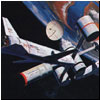 |
NEXT LOGICAL STEP: The US space station studies during the Shuttle development In 1972, Nixon administration approved the development of the reusable Space Shuttle as a main direction for the US manned space program. The Space Shuttle was envisioned as a cheap and reliable transportation system between Earth and low orbit. For NASA it meant the Space Shuttle would launch and service a space station -- the next "logical step" in the human exploration of space. However, during the most of the 1970s, all "dreams" of the Shuttle-based space station remained on a "back burner," as NASA struggled with technical problems and cost overruns in the development of the Shuttle itself. |
|||||||
|
SPACE
STATION FREEDOM CHRONOLOGY (1984-1992)
|
||||||||
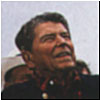 |
1984: Go ahead NASA's dreams of developing the space station, stalled for years by the difficult birth of the Space Shuttle, finally came true in January 1984. During his State of the Union address, President Reagan gave official green light to the ambitious project, which envisioned permanently manned space station by 1991. Reagan also invited US allies to take part in the program. At the beginning of March, NASA Administrator James Beggs left for Europe and Japan to discuss possible cooperation on the space station with the respective agencies. In April NASA opened Space Station Program Office and in September invited the aerospace industry to submit proposals for the station design. (91) |
|||||||
 |
1985: Power tower By 1985, NASA envisioned the station as a 121.9-meter "power tower-like" truss with pressurized modules clustered at the bottom of the boom and solar arrays and astronomy payloads attached at the secondary truss at the top. Seven Shuttle flights would be required for the initial assembly. In May 1985, NASA held the space station international user workshop in Copenhagen, Denmark. (94) By that time, European Space Agency preliminary agreed to contribute a pressurized lab and a polar orbiting free-flying platform into the project. (93) |
|||||||
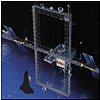 |
1986: Dual keel By March 1986, NASA approved new configuration for its future outpost in space. The expanded design now included a grandiose 94.5 by 45.7-meter rectangular truss assembled in orbit out of cubical sections 5 by 5 meters. Astronomy payloads would be attached to the upper boom of the truss, while Earth-watching remote-sensing instruments would rest on the lower boom. Pressurized modules and solar arrays would be attached to yet another truss splitting the main rectangle at the middle. By midyear, US allies agreed on their roles in the project: Japan and ESA would contribute pressurized labs, Canada would build a robotic arm. |
|||||||
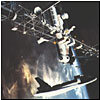 |
1987: One keel Space Shuttle put a brake on the station project again, when in the wake of the Challenger disaster, NASA had to scale down its future plans. As a result of lower expectations about post-Challenger flight rate, NASA reduced the design of the station to a single truss holding all elements of the station. Still, the original "dual-keel" configuration could be reached in the future. The launch of the station was pushed back to 1995. |
|||||||
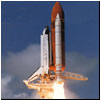 |
1988: Freedom In the course of 1988, NASA and contractors went through so-called Program Requirement Reviews, PRR. The program costs, contractor work, schedules and responsibilities were all readjusted to the latest funding levels. During second half of 1988, the negotiations between NASA and its foreign partners on cooperation in the development of the station finally concluded. On Sept. 29, in Washington, as US Space Shuttle resumed flights after the Challenger accident, 12 nations signed a formal agreement on their participation in the space station program. |
|||||||
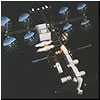 |
1989 On July 20, the twentieth anniversary of the Apollo moon landing, President Bush called for return to the Moon and manned mission to Mars within so-called Space Exploration Initiative, SEI. The space station was perceived as "launch pad" for such plans. Different earlier studies looked at possible roles, the station could play in manned planetary missions. The SEI plan has never been implemented, while the space station program faced severe budget cuts. |
|||||||
 |
1990 In October, the US Congress cuts the space station budget for 1991 by $551 million. Total $6 billion had to be cut during 1991-1996. As a result, in November, NASA started another redesign of the project. |
|||||||
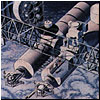 |
1991 After a five-month review, NASA scaled down the station. The pressurized lab and hab modules, as well as the main truss were shortened. The pressurized modules were reduced from 13.4 meters to 8.2 meters in length. The main truss shortened from 150 to 108 meters. The launch of the first element was pushed back by eight months to November 1995. In the meantime, during the summit in Moscow on July 30-31, Presidents George Bush and Mikhail Gorbachev signed an agreement to send a US astronaut to Mir and fly a Russian cosmonaut on the US Shuttle. |
|||||||
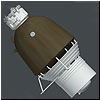 |
1992: Russians are coming Russia entered the scene, when NASA concluded that it would be able to address the issue of the emergency return from the station quickly and economically by incorporating the veteran Soyuz spacecraft into the design of the outpost. On June 18, after three months of negotiations, NASA Administrator Daniel Goldin and Director General of the Russian Space Agency Yuri Koptev "ratified" a contract between NASA and NPO Energia to study possible use of Soyuz and Russian docking port in the Freedom project. In October NASA and Russian Space Agency also signed an agreement about Shuttle mission to Mir in 1995. According to the agreement, the Shuttle would pick up a US astronaut and two Russian cosmonauts after a three-month mission and return them to the US for the post-flight evaluation. (57) |
|||||||